[Editor’s Note: Mad Scientist Laboratory is pleased to publish today’s post by Mr. John C. Bauer, who expands our geostrategic lexicon with a new term: Kairosthenic Power. History is replete with empires, kingdom’s, and nation’s that once strode the world’s stage with globe-girdling power and influence, yet with the inexorable march of time, have been consigned to half-forgotten shelves in dusty archives. Mr. Bauer explores the constituent elements of kairosthenic power — enduring national strength — and reveals the essential role that culture plays, complementing the more conventional measures of economic, political, and military clout. This begs the question, which ascendant powers today will prove enduring through the Twenty-First Century?]
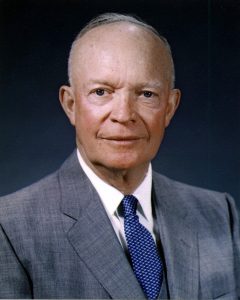 In retrospect, it may have been one of the most ironic moments of the Cold War. Early in Dwight Eisenhower’s first term, during a meeting of the National Security Council, the President asked his advisors to propose an economic strategy to counter the emerging global threat posed by Soviet foreign economic policies. Not only were the Russians promoting their rapid industrialization model to foreign governments, the Marxist ideology that supported it was proving increasingly attractive to anti-colonial movements around the world. European empires were in full retreat, leaving a void the communists were eager to fill.
In retrospect, it may have been one of the most ironic moments of the Cold War. Early in Dwight Eisenhower’s first term, during a meeting of the National Security Council, the President asked his advisors to propose an economic strategy to counter the emerging global threat posed by Soviet foreign economic policies. Not only were the Russians promoting their rapid industrialization model to foreign governments, the Marxist ideology that supported it was proving increasingly attractive to anti-colonial movements around the world. European empires were in full retreat, leaving a void the communists were eager to fill.
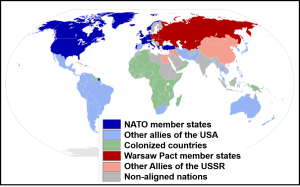 Eisenhower believed Western liberal democratic ideals, and the free enterprise and open trade that supported them, were under direct threat. The United States confronted a new “Era of Contested [Strategic] Equality.”1 Two superpower-led blocs were contending for global dominance and economic considerations were becoming increasingly important. Expansion of American export controls and foreign development aid were not enough. The Soviets had the strategic initiative in the economic domain.2 Something had to be done, so Ike needed new ideas, a new strategy, and he needed it fast. But those attending the Council meeting remained silent. No new strategy emerged.
Eisenhower believed Western liberal democratic ideals, and the free enterprise and open trade that supported them, were under direct threat. The United States confronted a new “Era of Contested [Strategic] Equality.”1 Two superpower-led blocs were contending for global dominance and economic considerations were becoming increasingly important. Expansion of American export controls and foreign development aid were not enough. The Soviets had the strategic initiative in the economic domain.2 Something had to be done, so Ike needed new ideas, a new strategy, and he needed it fast. But those attending the Council meeting remained silent. No new strategy emerged.
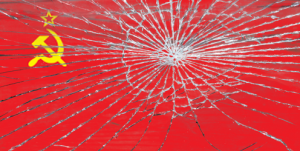 The grand irony of that moment was that the best strategy proved to be no strategy at all. Less than forty years later, the Soviet economic model was so discredited it had lost its global appeal. It had even contributed to the collapse of the Soviet Union itself. Free trade and private enterprise proliferated around the world, leading to an era of growth and prosperity unprecedented in history. Communist countries, even China, were rushing to emulate capitalist success. The American economic model had proven superior without any strategy whatsoever. It was such a decisive repudiation of the Marxist material dialectic—the inevitable march of history toward communism—that Soviet ideology would never again pose an existential threat to Western democracies. All Eisenhower really needed was time.
The grand irony of that moment was that the best strategy proved to be no strategy at all. Less than forty years later, the Soviet economic model was so discredited it had lost its global appeal. It had even contributed to the collapse of the Soviet Union itself. Free trade and private enterprise proliferated around the world, leading to an era of growth and prosperity unprecedented in history. Communist countries, even China, were rushing to emulate capitalist success. The American economic model had proven superior without any strategy whatsoever. It was such a decisive repudiation of the Marxist material dialectic—the inevitable march of history toward communism—that Soviet ideology would never again pose an existential threat to Western democracies. All Eisenhower really needed was time.
There is a lesson here in geopolitics that can be oversimplified. One might conclude that the Cold War is evidence that economics determines long-term geopolitical outcomes. That would certainly seem apparent, given the example above. While partly true, the deeper lesson is that the longer the duration of strategic competition, the more the ascendancy of nations, peoples, and ideas depends on the defining, fundamental characteristics of those nations in contest. Economics, while central, comprises only one of these fundamental characteristics.
As we enter a new Era of Contested Equality, I propose Mad Scientists employ a new term that captures the power of a nation to prevail strategically over time: kairosthenic power or, literally, timestrength. By kairosthenic power we combine kairos – the opportune time, season, or epoch plus sthenos – a condition of mental and moral strength and determination.
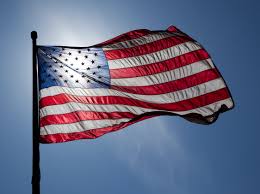 The first term, Kairos, comes from the ancient Greek. Unlike chronos, a linear measure of time, kairos has a qualitative meaning. It considers context, for example “a time for every purpose under heaven.” Most commonly understood as momentary opportunity, it also describes a season of exigence, or the right thing(s) at the right time in the right measure. Within the realm of international competition, it can be understood as an era – one of national power and ascendancy, or the perpetuation and defense of national identity or a set of ideals.
The first term, Kairos, comes from the ancient Greek. Unlike chronos, a linear measure of time, kairos has a qualitative meaning. It considers context, for example “a time for every purpose under heaven.” Most commonly understood as momentary opportunity, it also describes a season of exigence, or the right thing(s) at the right time in the right measure. Within the realm of international competition, it can be understood as an era – one of national power and ascendancy, or the perpetuation and defense of national identity or a set of ideals.
 Sthenos is the strength of will and purpose derived from moral character and energy. The familiar word calisthenic employs the term with regard to physical conditioning and beauty as well as the need to be disciplined in their pursuit. Sthenos combines psychological and physical strength. Thus, individuals, groups, and nations with more energy and determination have superior strength, compared to those with less.
Sthenos is the strength of will and purpose derived from moral character and energy. The familiar word calisthenic employs the term with regard to physical conditioning and beauty as well as the need to be disciplined in their pursuit. Sthenos combines psychological and physical strength. Thus, individuals, groups, and nations with more energy and determination have superior strength, compared to those with less.
Kairosthenic power is more than Soft Power or Smart Power, which employ various instrumentalities. In contrast, Kairosthenics captures the idea that the strategic endurance of nations will depend on both their willpower and their attributes applied over a season in the environmental context in which they compete. It is the quality of national strength derived from the inherent qualities of a nation’s (or, perhaps, an alliance’s) most fundamental, or defining, characteristics. Kairosthenic power will certainly include military, technological and economic aspects, but it also includes culture, social psychology, military ethos, political and legal institutions, scientific rigor, openness and freedom of thought, and more.
How would one identify and measure these kairosthenic characteristics? Academic research on this question is surprisingly abundant, though not in explicitly kairosthenic terms. Some scholars, for instance, view weather,  geography, or natural resources as the primary, even deterministic, sources of a nation’s timestrength.3 Political scientists may point to leaders, legal characteristics, and institutional or ideological power dynamics. Other social scientists have their own theories.
geography, or natural resources as the primary, even deterministic, sources of a nation’s timestrength.3 Political scientists may point to leaders, legal characteristics, and institutional or ideological power dynamics. Other social scientists have their own theories.
What is striking about most social science theories is that, while compelling, they are rarely multi-disciplinary and, hence, rarely cohere with one another. Kairosthenic power is overwhelmingly multivariate. It depends on complex societal attributes that interact and reinforce (or weaken) one another to affect strategic competitiveness over the long term. Thus geography and resources, and even economics, contribute significantly but are unlikely to be decisive in themselves.
A Kairosthenic perspective therefore begs a deeper analysis. As we enter the next Era of Contested Equality, or the relative equalization of power between international actors, which national attributes will matter the most over time, in what measure, and under which circumstances?
The Cold War example is instructive here. It was a period when “no one actor [had] long-term strategic or technological advantage, with aggregate power between the U.S. and its peer and near-peer rivals being equivalent, but not necessarily symmetric.”4 Military power between the United States and the Soviet Union was generally balanced—though asymmetric—so competition shifted to other arenas involving different instruments of national power. The Cold War shows that relative equalization in one dimension of national power drives competition into other dimensions, increasing the kairosthenic significance of those dimensions. Hence, economic competition—an area of clear difference and asymmetry—increased in strategic importance during the Eisenhower Administration.
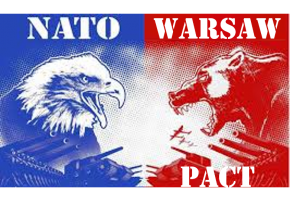 The Cold War strategic environment highlighted the importance of this economic competition. A central question during this century will be whether economic strength proves decisive once again.
The Cold War strategic environment highlighted the importance of this economic competition. A central question during this century will be whether economic strength proves decisive once again.
The strategic importance of economics is certainly not lost on China. Chinese strategists, perhaps reflecting their wider culture, extol a long view of history. They also appear to be devoted students of Paul Kennedy (The Rise and Fall of the Great Powers).5 Indeed, there is a fascinating correlation between Kennedy’s thesis—that Great Powers are established through economic development and then weakened by “imperial overstretch”—and the modern Chinese emphasis on economic development and official rhetoric about declining American power. When combined with the energy of Chinese ethnic nationalism, economic growth has the potential to provide China with significant kairosthenic strength. Chinese economic power is already becoming a major influence around the world.

Beyond China, history suggests economic power may be the most important element of modern timestrength. Industrialization propelled the great powers of the 19th and 20th Century. Conversely, economic weakness was a defining characteristic of many short-lived powers, like the Austro-Hungarian Empire, Ottoman Turkey and, of course, the Soviet Union.
The deeper issue is whether economic strength has its own fundamental root causes, hence deeper sources of timestrength. Many economic theorists and historians believe it does. A leading developmental economist of the 1950s, Lord Peter Bauer, discovered that underneath economic development and dynamism is a cultural layer that promotes capital formation and efficient resource allocation, hence long-term economic vitality.6 Importantly, this cultural layer is distinctly different between groups even when they are in the same country.7 When macroeconomic variables are equal, social mores and traditions, i.e., “noneconomic variables” like aptitudes and cultural characteristics, undergird economic performance over time. Hence, culture may hold more root-level significance for national power than is commonly understood. This idea is supported by recent more recent economic research into the role of political culture in economic development by scholars such as Daron Acemoglu and James Robinson.8
Bauer’s observations about culture and its role in economic development is reinforced by economic historians such as David Landes.9 His research suggests that disparities in economic growth may occur primarily because some cultures are willing to try harder and keep trying in response to failure. If true, this would have broad explanatory power and profound implications for the future strategic environment.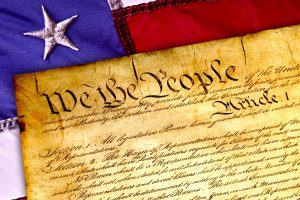 Perhaps it was cultural determination, even amid setbacks, that propelled American economic performance over the past two centuries. China’s rapid economic development, and Chinese culture, may yet be tested in this regard.
Perhaps it was cultural determination, even amid setbacks, that propelled American economic performance over the past two centuries. China’s rapid economic development, and Chinese culture, may yet be tested in this regard.
If deeper culture is so central to enduring timestrength, which modern cultures will prove ascendant in the next Era of Contested Equality? As important as the question is to strategic outcomes, it is difficult to answer. There are complex, and perhaps disquieting, conclusions to be made about kairosthenic power. Do we adequately understand the aspects of our own nation that will provide enduring timestrength? Are we willing to confront those that make us weaker? Our frontier of understanding about attributes that enable nations to endure during extended periods of contest is still relatively unexplored.
It may therefore be time for a kairosthenic reassessment of Cold War history. What aspects of culture enabled the United States and its allies to maintain political, economic and cultural strength over decades in the face of an aggressive ideological foe? There are some obvious hints from the Eisenhower period. American policies in the 1950’s included investment in national infrastructure and human capital, investment in advanced scientific research, reduction of federal spending, and the beginning of a painful but necessary process of self-examination with regard to civil rights.10 The period also saw the strengthening of Western security and economic alliances—based as much on shared values as defense—and a clear view of the world that properly accounted for both existential threats and regional security challenges.
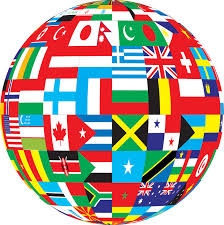 The Cold War is over, but it is almost certain that we are moving into another Era of Contested Equality. If so, which nation or alliance will hold the edge in kairosthenic power? Will China’s ethnic nationalism and economic model prove
The Cold War is over, but it is almost certain that we are moving into another Era of Contested Equality. If so, which nation or alliance will hold the edge in kairosthenic power? Will China’s ethnic nationalism and economic model prove 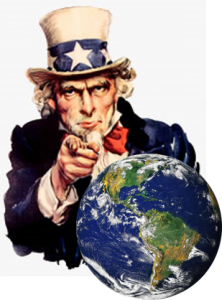 superior over time, or do they contain subtle strategic weaknesses? With the many new challenges of the 21st Century, including technological convergence and the rise of peer competitors, the United States would be wise to remember that its kairosthenic competitiveness will be determined by more than economic or military policies.
superior over time, or do they contain subtle strategic weaknesses? With the many new challenges of the 21st Century, including technological convergence and the rise of peer competitors, the United States would be wise to remember that its kairosthenic competitiveness will be determined by more than economic or military policies.
If you enjoyed this post, please also see:
– A View of the Future: 2035-2050
– Lessons Learned in Assessing the Operational Environment, by Mr. Ian Sullivan
– Extended Trends Impacting the Future Operational Environment
– Emergent Global Trends Impacting on the Future Operational Environment
Mr. John C. Bauer is a Senior Analyst for TRADOC G-2 ACE Threats at Ft. Leavenworth, KS, where he helps characterize future threats and operational environments in support of U.S. Army capabilities development. He has worked as a strategic defense analyst for academia, industry and government, most recently as one of the architects of U.S. European Command’s Deep Futures initiative.
1 The Operational Environment and the Changing Character of Future Warfare, US Army Training and Doctrine Command, Version 4
2 Cupitt, Richard T., Reluctant Champions: US Presidential Policy and Strategic Export Controls, Routledge Publishing, New York, 2000
3 See, for instance, Gallup, Gaviria and Lora, Is Geography Destiny? Lessons from Latin America, Stanford University Press, 2003
4 The Operational Environment and the Changing Character of Future Warfare, US Army Training and Doctrine Command, Version 4
5 Kennedy, Paul, The Rise and Fall of the Great Powers: Economic Change and Military Conflict 1500 to 2000, Random House, New York, 1987
6 Bauer, Peter, Reality and Rhetoric: Studies in the Economics of Development and Equality, the Third World, and Economic Delusion, Littlehampton Book Services Inc, 1984
7 Ibid. Bauer’s studies focused on differing growth rates among ethnic Chinese, Indian and Malay groups that shared identical macroeconomic, geographic, and political conditions in Malaysia.
8 Acemoglu, Daron and Robinson, James, Why Nations Fail: The Origins of Power, Prosperity and Poverty, Crown Publishing, Random House, New York, 2012. See also Diamond, Jared, Collapse: How Societies Choose to Fail or Succeed, Penguin Group, New York, 2005
9 Landes, David, The Wealth and Poverty of Nations: Why Some Are So Rich and Some Are So Poor, W.W. Norton and Company, Inc., New York, 1998
10 Pach, Chester Jr., Dwight D. Eisenhower: Domestic Affairs, University of Virginia Miller Center, August 2019




Interesting concept.
Judging by Vietnam, Iraq, Afghanistan, just to cite a few examples, it is not always a US strength, as compared to our adversaries.